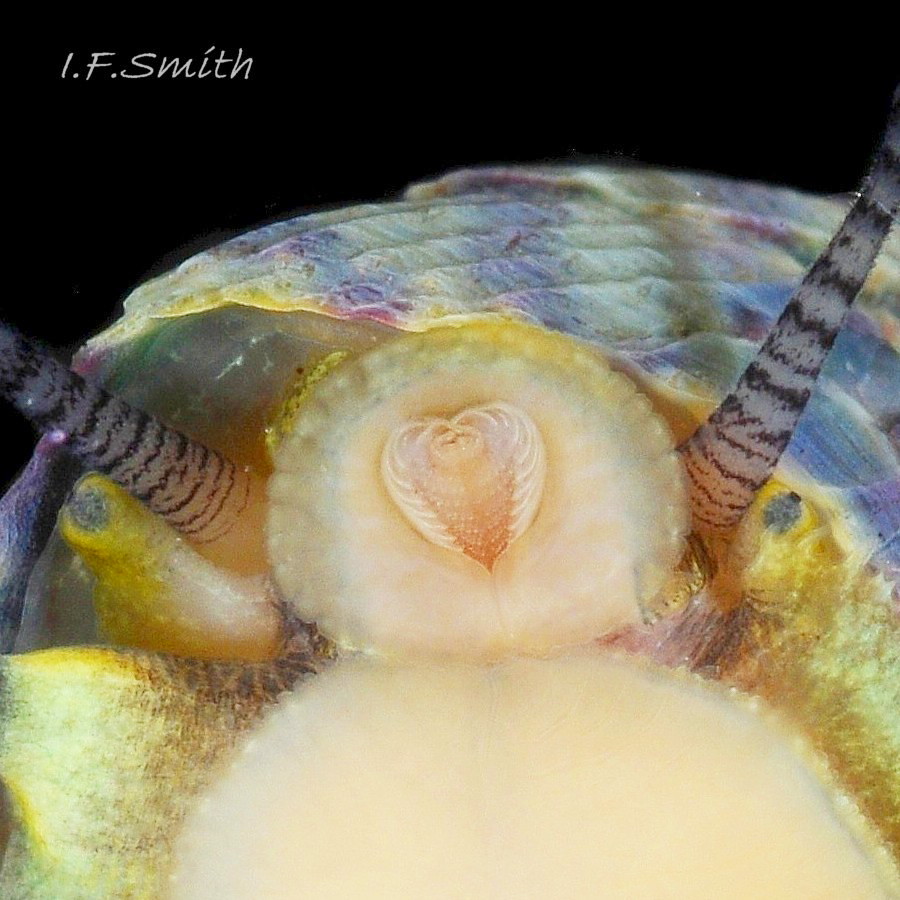Central and lateral cutting teeth erect on odontophore (‘tongue’). Long soft marginal teeth fanning out to brush up cut particles.
FURTHER INFORMATION
On rocky shores in Britain, topshells (Trochidae), limpets (Patellidae) and periwinkles (Littorinidae) are all microphagous herbivores (eat microscopic plants), but they feed in different manners. The multi-fine-toothed rhipidiglossan radula, soft as human hair, of G. umbilicalis and other top shells brushes particles from the surface. The less complex taenioglossan radula of periwinkles rakes up particles. The docoglossan radula of limpets, hard as human teeth, cuts deeply, often scoring the rock surface, and shovels up the results. Competition between the topshell “brushers” is reduced by the littoral species living at different tide levels.
A very detailed ten-page illustrated account of the operation of a "brush" radula, on the related Monodonta lineata (=Phorcus lineatus) is on pp. 179 – 188 in Fretter & Graham (See references on species description 02 Steromphala umbilicalis ).

